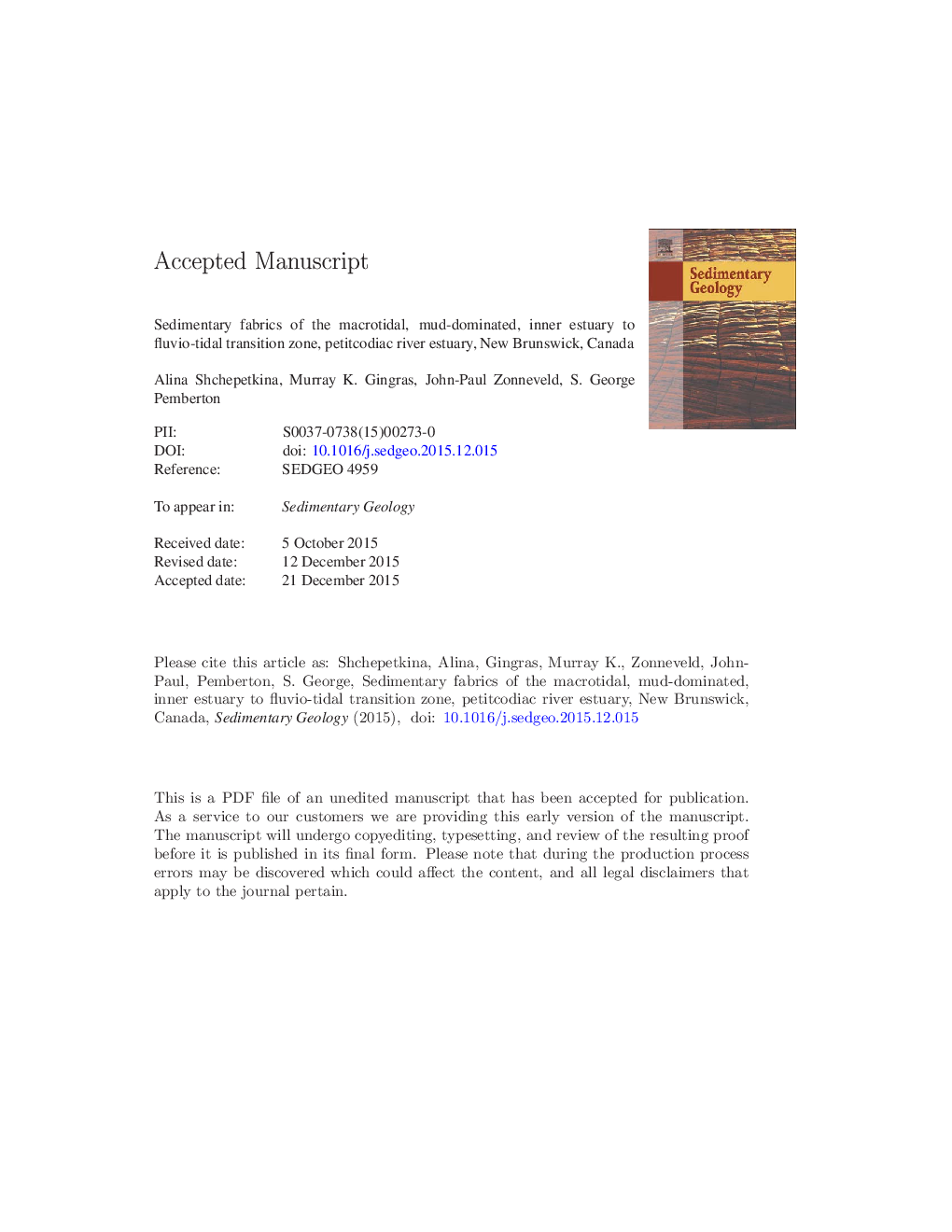| Article ID | Journal | Published Year | Pages | File Type |
|---|---|---|---|---|
| 4689126 | Sedimentary Geology | 2016 | 68 Pages |
Abstract
The study provides a detailed description of mud-dominated sedimentary fabrics and their application for the rock record within the inner estuary to the fluvial zone of the Petitcodiac River estuary, New Brunswick, Canada. Sedimentological characteristics and facies distributions of the clay- and silt-rich deposits are reported. The inner estuary is characterized by thick accumulations of interbedded silt and silty clay on intertidal banks that flank the tidally influenced channel. The most common sedimentary structures observed are parallel and wavy lamination, small-scale soft-sediment deformation with microfaults, and clay and silt current ripples. The tidal channel contains sandy silt and clayey silt with planar lamination, massive and convolute bedding. The fluvio-tidal transition zone is represented by interbedded trough cross-stratified sand and gravel beds with planar laminated to massive silty mud. The riverine, non-tidal reach of the estuary is characterized by massive, planar tabular and trough cross-stratified gravel-bed deposits. The absence of bioturbation within the inner estuary to the fluvio-tidal transition zone can be explained by the following factors: low water salinities (0-5Â ppt), amplified tide and current speeds, and high concentrations of flocculated material in the water body. Notably, downstream in the middle and outer estuary, bioturbation is seasonally pervasive: in those locales the sedimentary conditions are similar, but salinity is higher. In this study, the sedimentological (i.e., grain size, bedding characters, sedimentary structures) differences between the tidal estuary and the fluvial setting are substantial, and those changes occur over only a few hundred meters. This suggests that the widely used concept of an extensive fluvio-tidal transition zone and its depositional character may not be a geographically significant component of fluvial or estuary deposits, which can go unnoticed in the study of the ancient rocks.
Keywords
Related Topics
Physical Sciences and Engineering
Earth and Planetary Sciences
Earth-Surface Processes
Authors
Alina Shchepetkina, Murray K. Gingras, John-Paul Zonneveld, S. George Pemberton,
